Abstract
Five different types of liquid soap were studied in hospital wards, each during two months' use. Altogether 1306 finger print samples were taken from the hands of the staff by sampling twice a week and the acceptability of the soaps was measured by a questionnaire. During the use of different soaps only slight differences were found in the numbers of total bacteria or in the occurrence of Staph. aureus and gram-negative bacilli on the hands. During the use of the emulsion-type product studied, several persons who had dermatological problems had lower mean bacterial counts of the fingers than during the use of the other soaps. This soap was also favourably accepted by the staff. After over one year's use of pine oil soap and alcohol, the staff of the hospital was satisfied with the method. However, several persons with skin problems admitted to not using soap or alcohol. The considerable differences found in the acceptability of soaps imply that for use in hospital the choice of a soap acceptable to the nursing staff is important in promoting proper hand hygiene.
Full text
PDF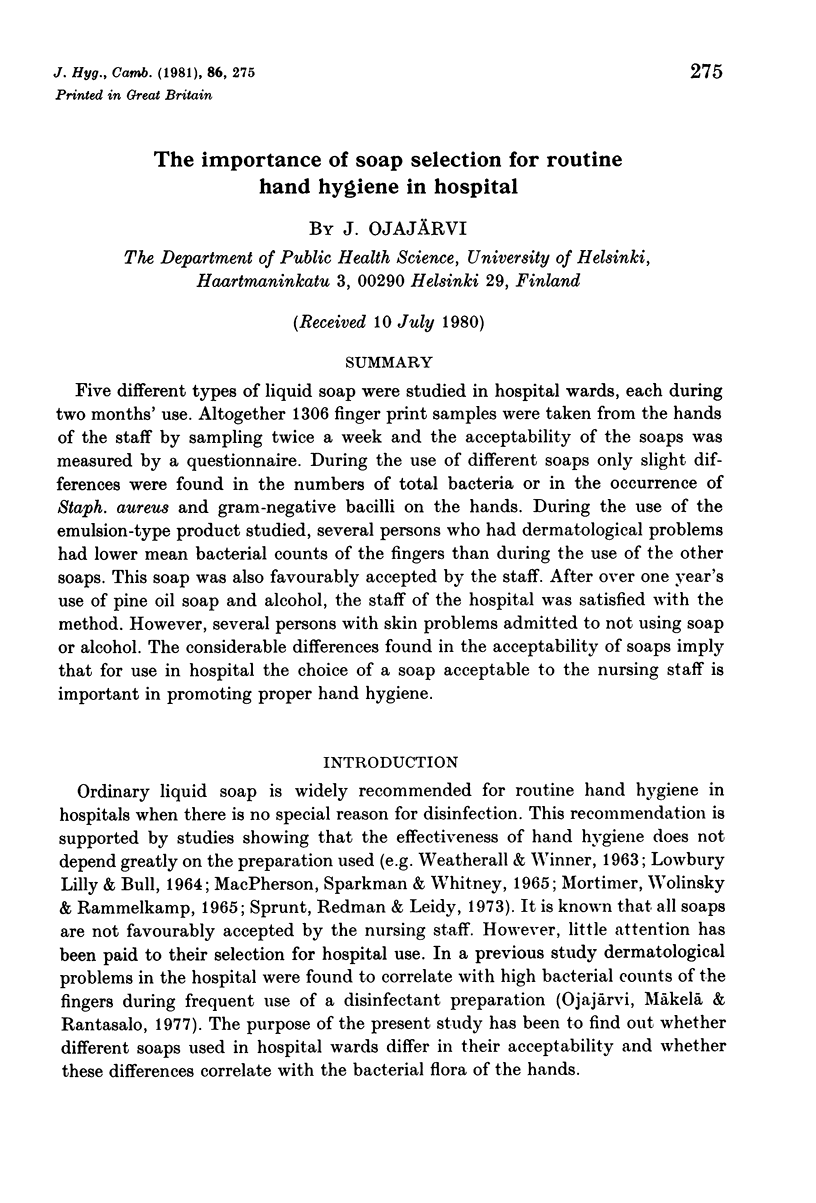
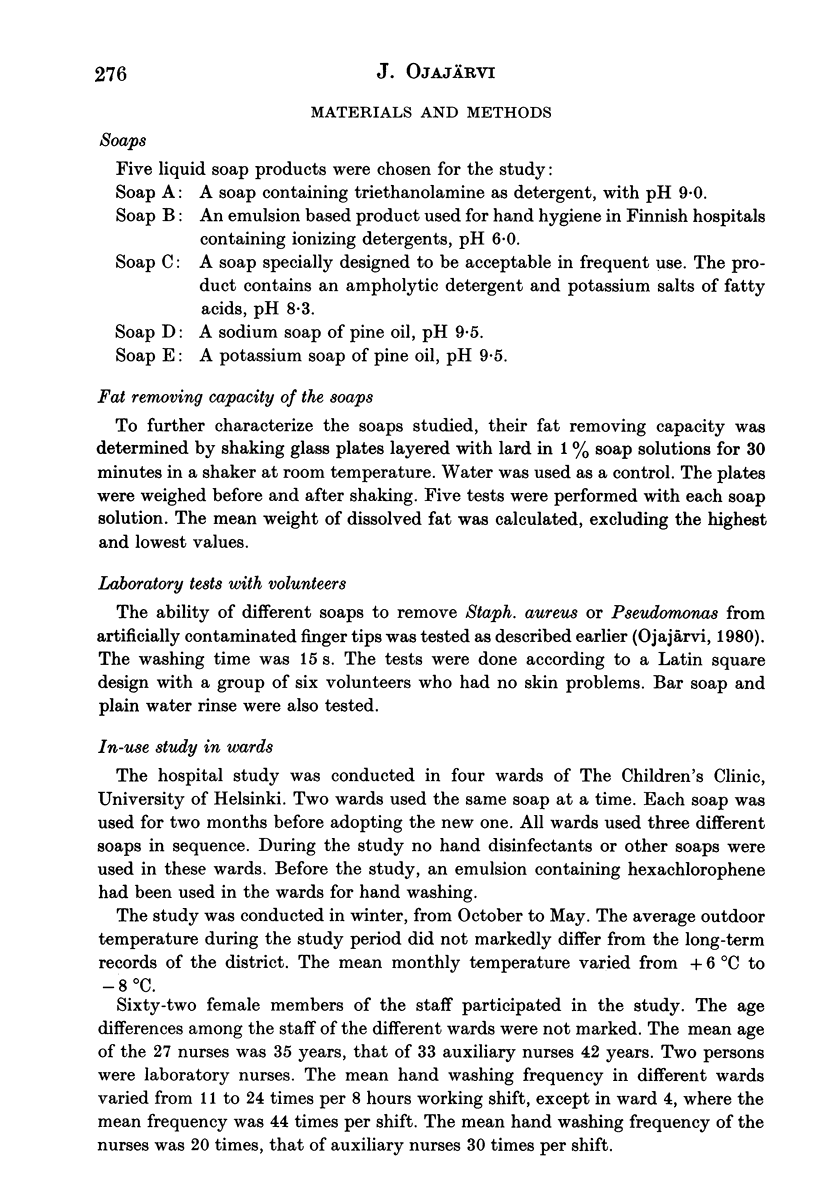
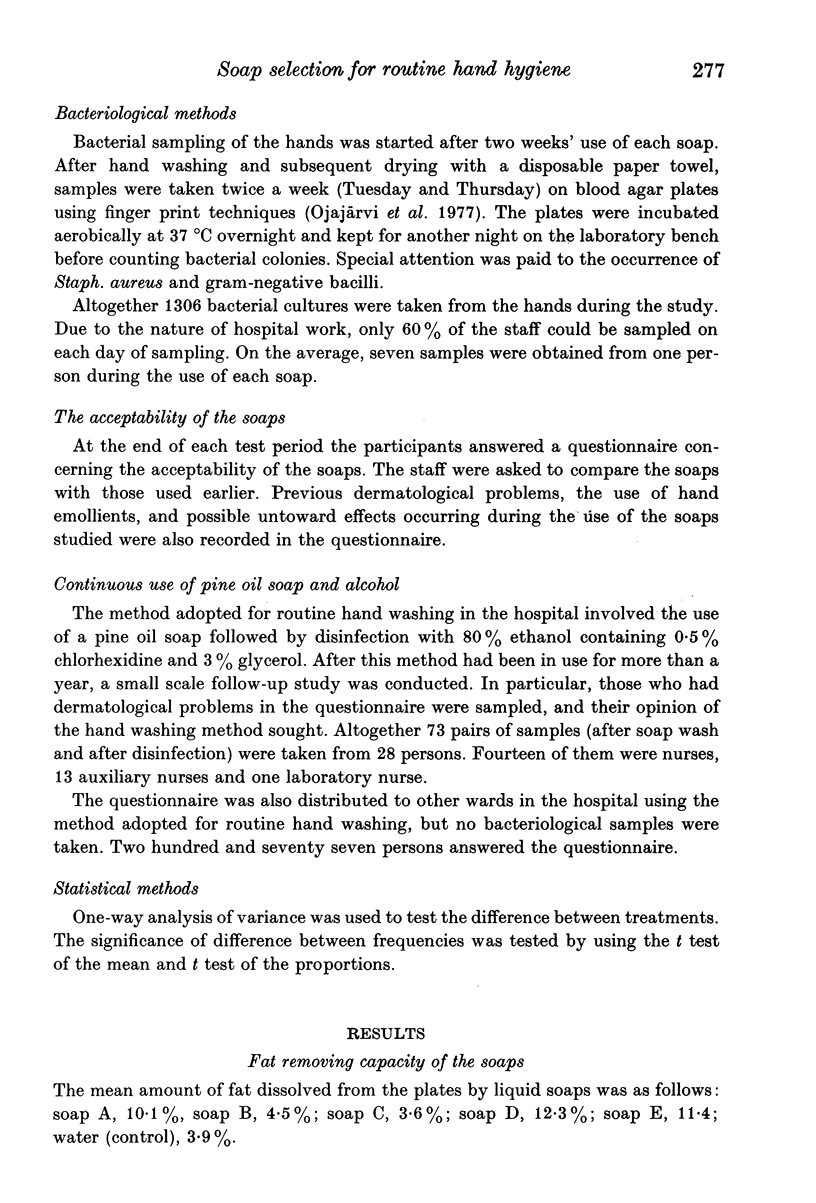
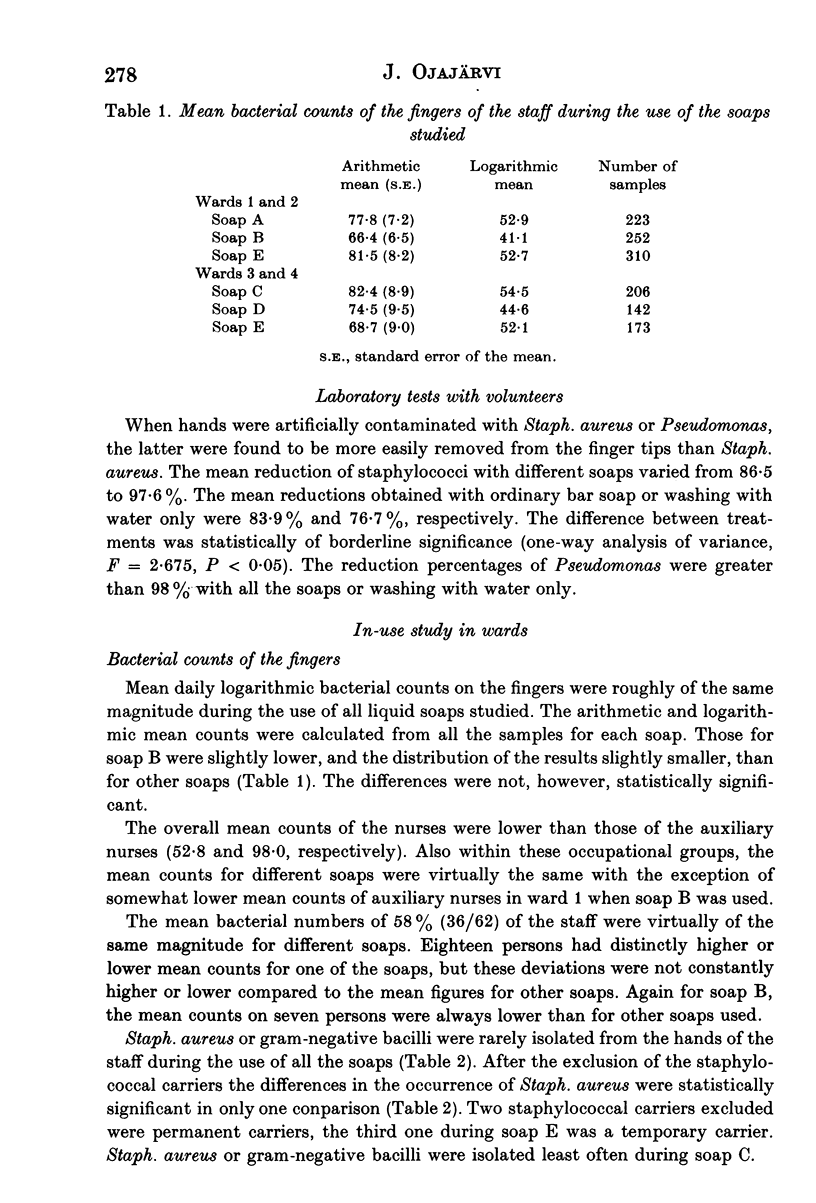
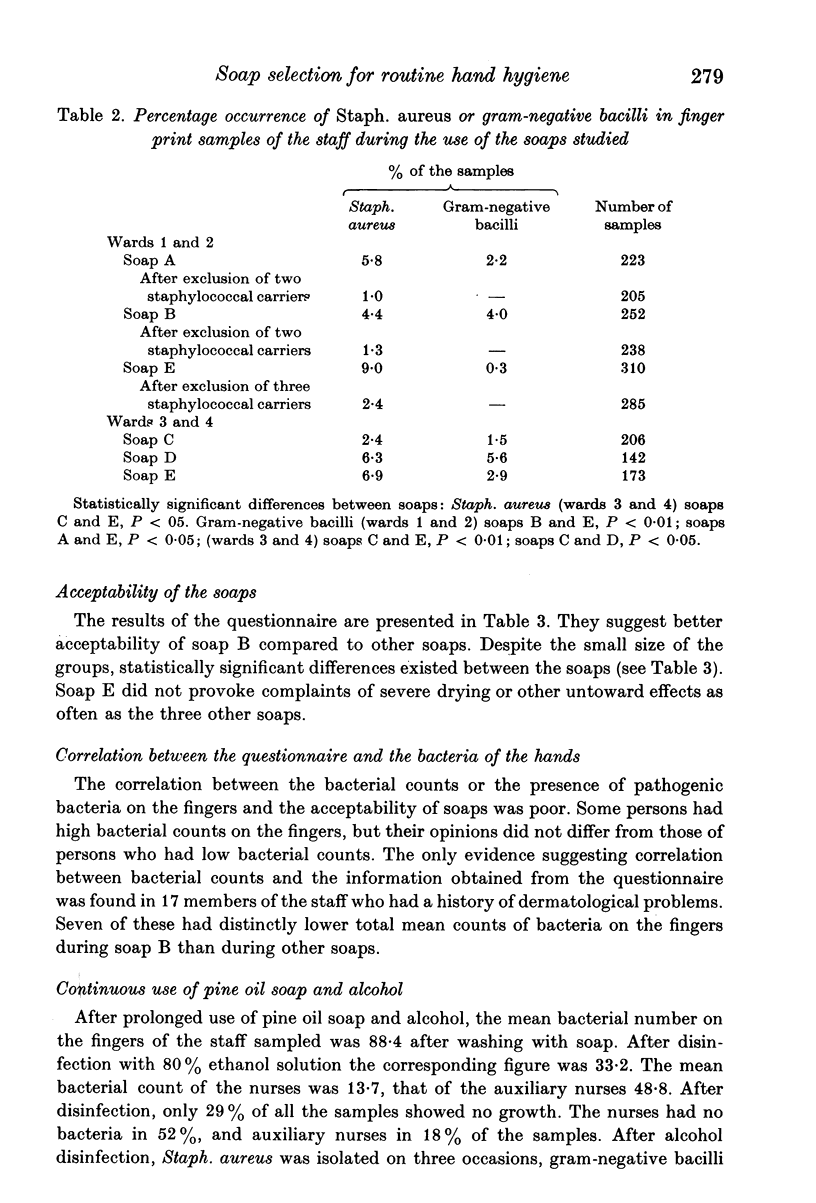


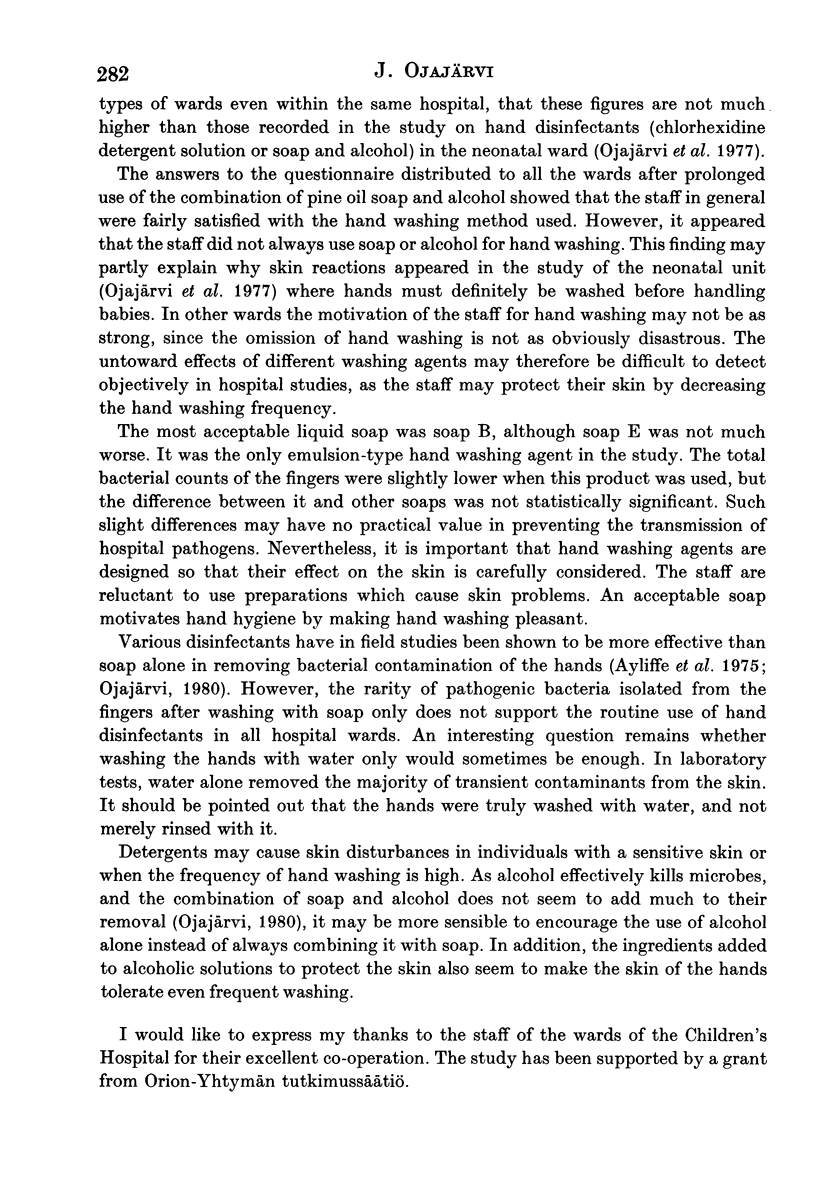

Selected References
These references are in PubMed. This may not be the complete list of references from this article.
- Ayliffe G. A., Bridges K., Lilly H. A., Lowbury E. J., Varney J., Wilkins M. D. Comparison of two methods for assessing the removal of total organisms and pathogens from the skin. J Hyg (Lond) 1975 Oct;75(2):259–274. doi: 10.1017/s002217240004729x. [DOI] [PMC free article] [PubMed] [Google Scholar]
- Fox M. K., Langner S. B., Wells R. W. How good are hand washing practices? Am J Nurs. 1974 Sep;74(9):1676–1678. [PubMed] [Google Scholar]
- LOWBURY E. J., LILLY H. A., BULL J. P. DISINFECTION OF HANDS: REMOVAL OF TRANSIENT ORGANISMS. Br Med J. 1964 Jul 25;2(5403):230–233. doi: 10.1136/bmj.2.5403.230. [DOI] [PMC free article] [PubMed] [Google Scholar]
- MACPHERSON C. R., SPARKMAN M. F., WHITNEY D. R. LACK OF EFFECT OF TWO HEXACHLOROPHENE-CONTAINING SOAPS UNDER NORMAL HOSPITAL WORKING CONDITIONS. Am J Surg. 1965 Jun;109:699–704. doi: 10.1016/s0002-9610(65)80038-1. [DOI] [PubMed] [Google Scholar]
- Ojajärvi J. Effectiveness of hand washing and disinfection methods in removing transient bacteria after patient nursing. J Hyg (Lond) 1980 Oct;85(2):193–203. doi: 10.1017/s0022172400063221. [DOI] [PMC free article] [PubMed] [Google Scholar]
- Ojajärvi J., Mäkelä P., Rantasalo I. Failure of hand disinfection with frequent hand washing: a need for prolonged field studies. J Hyg (Lond) 1977 Aug;79(1):107–119. doi: 10.1017/s0022172400052906. [DOI] [PMC free article] [PubMed] [Google Scholar]
- Sprunt K., Redman W., Leidy G. Antibacterial effectiveness of routine hand washing. Pediatrics. 1973 Aug;52(2):264–271. [PubMed] [Google Scholar]
- Taylor L. J. An evaluation of handwashing techniques-2. Nurs Times. 1978 Jan 19;74(3):108–110. [PubMed] [Google Scholar]
- WEATHERALL J. A., WINNER H. I. THE INTERMITTENT USE OF HEXACHLOROPHENE SOAP--A CONTROLLED TRIAL. J Hyg (Lond) 1963 Dec;61:443–449. doi: 10.1017/s0022172400021069. [DOI] [PMC free article] [PubMed] [Google Scholar]


